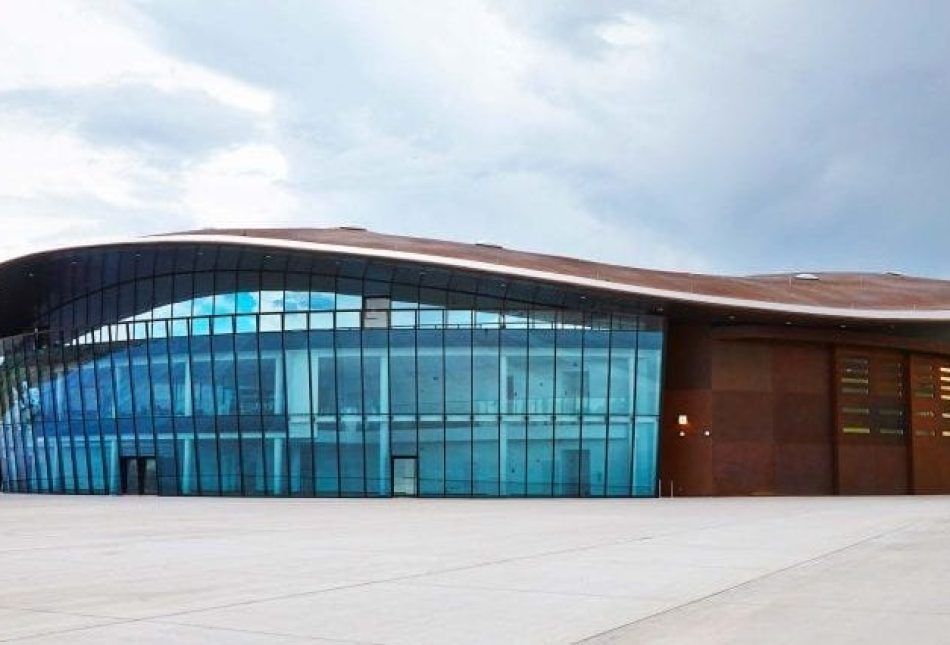The Spaceport and RailRunner: When Do We Stop Digging?

How long do you keep spending money on something before you quit and cut your losses? New Mexico’s Legislature will soon face some difficult decisions as to how much taxpayer money to spend on two high profile, Richardson-era projects, the Rail Runner and the Spaceport.
Let’s start with the RailRunner. The train already costs taxpayers nearly $50 million a year in payments on the initial infrastructure and operations. That doesn’t include two balloon payments of $230 million (made in addition to operations costs) which will come due next decade.
Now, due to a new federal regulation, New Mexico taxpayer could be on the hook for another $30 million to implement a federally-required safety system for the Rail Runner. It is worth pointing out that the federal regulation behind this requirement is a huge waste. Even Cass Sunstein who was President Obama’s administrator of the Office of Information and Regulatory Affairs has stated during testimony in the US House that the new “Positive Train Control” regulation produced benefits that are lower than its costs.”
The fact that this regulation is an absurd waste of money is of little consolation to New Mexico taxpayers who will nonetheless be forced to pay this $30 million in addition to the ongoing costs for infrastructure and operations.
A second project that just keeps getting pricier is New Mexico’s Spaceport. Taxpayers initially spent $210 million to construct the facility in hopes of bringing a new, private space industry to the state. Unfortunately, the launch schedule of the facility’s main tenant, Virgin Galactic, has repeatedly been delayed. These delays along with costly additions to the facility have led to a nearly abject lack of positive economic activity generated by the facility and have instead caused the Spaceport to suck up even greater amounts of taxpayer money above-and-beyond the original cost.
In 2012, taxpayers spent an unexpected $7 million to extend a runway at the Spaceport that was allegedly too short for spacecraft to launch. Now, as delays continue and Virgin Galactic continues to push back expected launch dates, the Spaceport will be requesting another $6.8 million to pave the road to the facility from the South. The 23-mile road is currently an unimproved dirt road maintained by Doña Ana County. The northern road, which connects to the Spaceport via Truth or Consequences, is paved.
Lastly, in terms of the Spaceport, taxpayers are on the hook for yet another $5 to $6 million required for management and operations for each year that Virgin Galactic delays commercial flights from the southern New Mexico spaceport.
Obviously, as New Mexico’s economy continues to struggle and tax revenue growth remains slow, the Legislature faces some difficult decisions on these two projects. Are there any limits as to how much taxpayers should be expected to pay to support these facilities before we decide to abandon them or take drastic steps to cut costs? If so, when is enough, enough?
What priorities are we giving up in order to attract a manned, private space industry that has yet to take flight and a train that can never come close to breaking even at a total cost of over $1 billion (before accounting for this new federal regulation)?
While it is easy to dismiss the additional money as just another cost of these publicly-beneficial projects, from a budgetary perspective, a dollar spent on spaceports and trains is a dollar diverted from schools, tax reform, and other economic development priories.
Regardless of how the Legislature decides to move forward regarding these two projects, I hope that policymakers in Santa Fe understand realize that the embracing the basics of government is tough enough.
The painful lessons here are that hitching one’s star to “the next big thing” or spending massive amounts of taxpayer money in an effort to change transportation patterns may prove a costly gamble.
Paul Gessing is the President of New Mexico’s Rio Grande Foundation. The Rio Grande Foundation is an independent, non-partisan, tax-exempt research and educational organization dedicated to promoting prosperity for New Mexico based on principles of limited government, economic freedom and individual responsibility.

